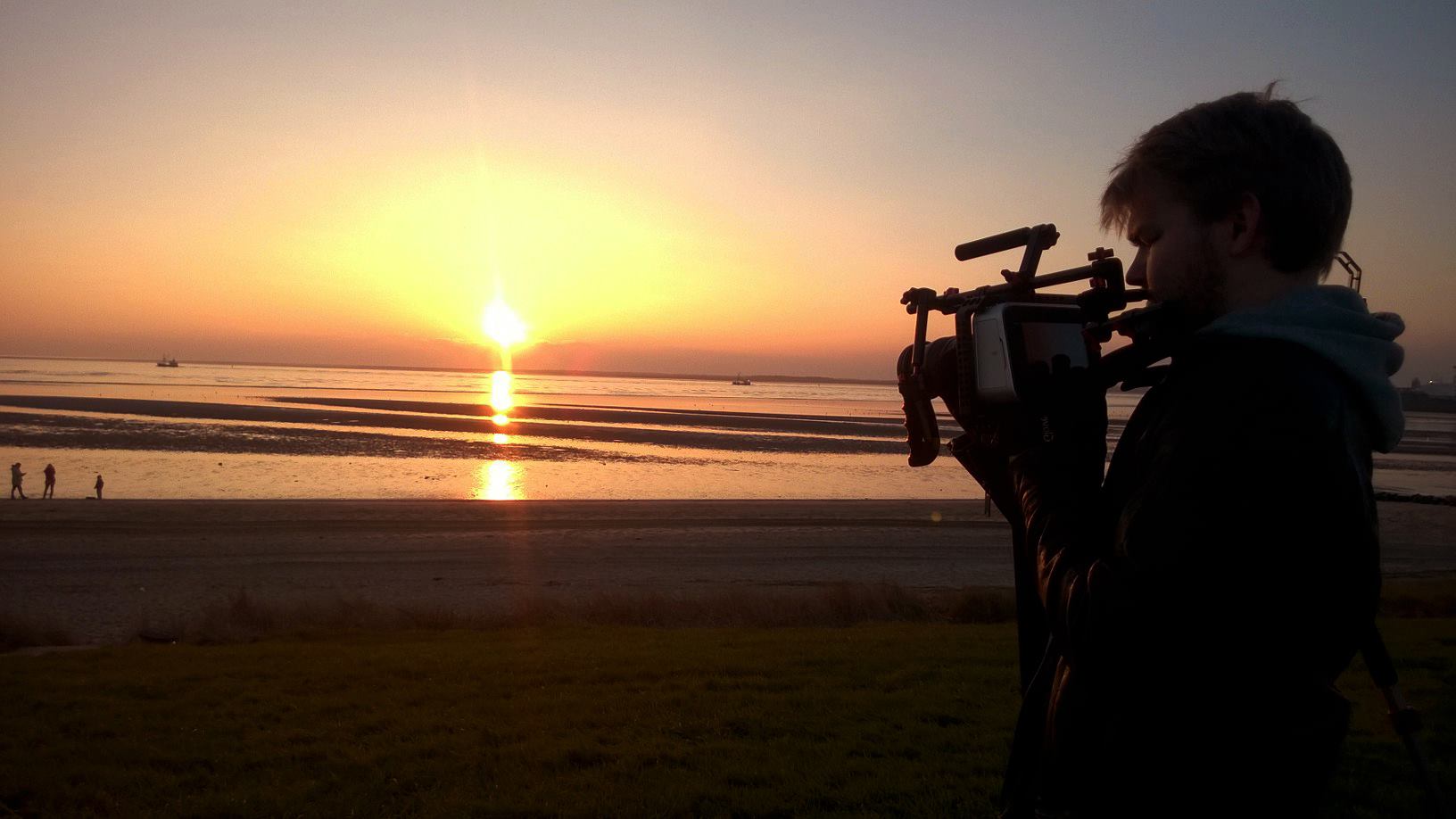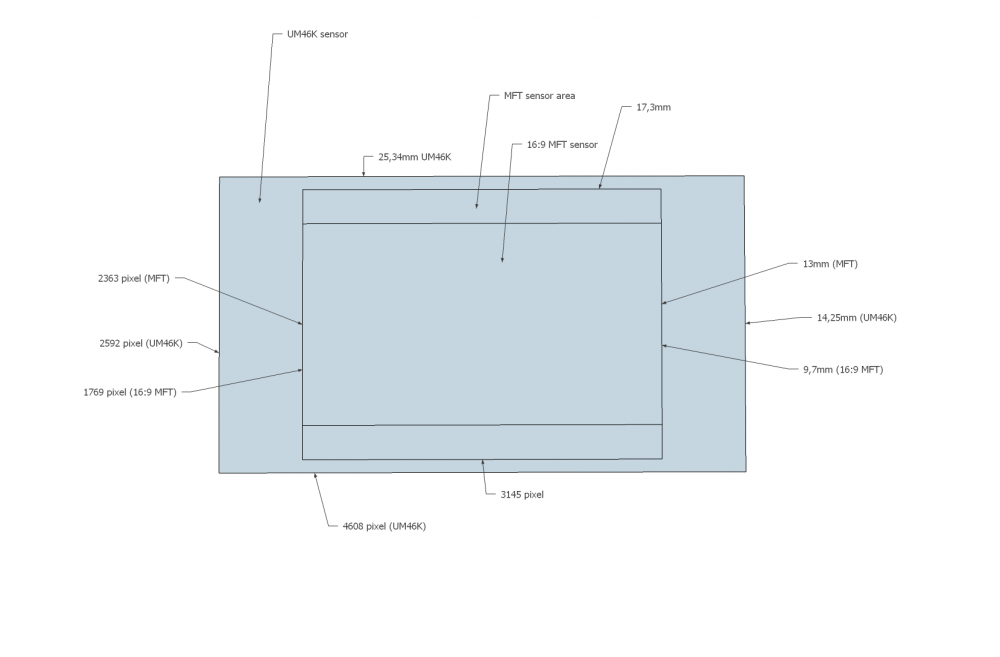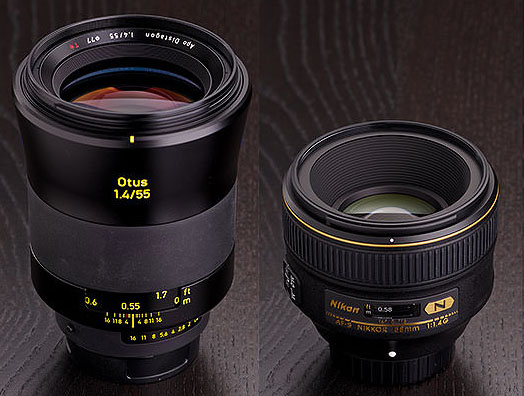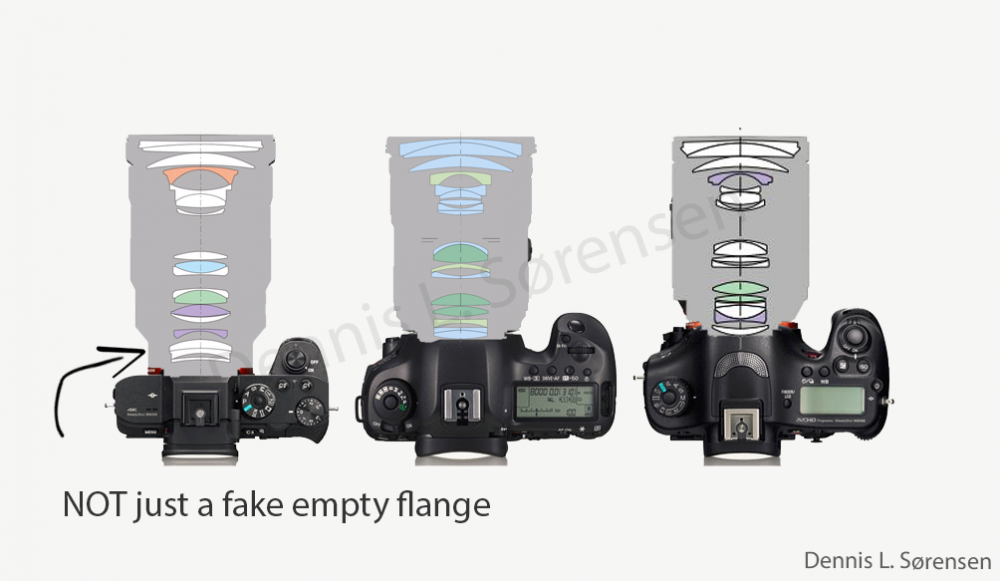-
Posts
14 -
Joined
-
Last visited
Content Type
Profiles
Forums
Articles
Posts posted by Dennis L Sorensen
-
-
Anyone interested in 8K should watch this first:
-
"– 15 stops of dynamic range from new, cleaner S35 sensor"
What?.. The 4.6K sensor already does this pr spec. And cleaner?.. No. Its the same sensor. Its just clocked faster and with faster internal hardware. Its not a new sensor. The old sensor has always been able to do this. Thats why the Ursa (big one) was advertised with 120fps 4K all those years ago.
"a Black Magic BM Raw recorder would be great as well"....
Cannot be done. Blackmagic RAW (or .braw) is partly debayered in camera and they need to profile the sensor, so there needs to be knowledge about the camera.. You cant just record a raw signal in braw. -
For people asking about the stills function.
This is just as the Ursa Mini Pro. Its a frame grab. I think they are marketing this WAY wrong. People think it take stills.. well.. no. It grabs a frame or the live video feed it produces from the sensor. Like a video for 1 frame what ever settings your are on. The format is DNG which you can convert to whatever you want afterwards. As it is a frame grab it will be at the resoultion you have choosen in-camera. So for 4K DCI it is 4096 x 2160 = 8.8mp (max).
I would not buy this for taking stills - unless you are a cinema guy and don't experct a "regular" stills camera as there is no dedicated stills functions and no mechanical shutter. But for taking a BTS frame grab its fine.
--- Monitor ---
The monitor is the same as the one found on their Ursa Mini 4K and 4.6K (not pro 4"). So expect what you get from that and not like 1000 nits. I think it was Stuart from BMD who said it - as a source.2 hours ago, Anaconda_ said:I wonder if you could use USB-C as a monitoring output. It obviously sends the picture out to record to thumbdrives so what about a USB monitor?
No. They used the knowlegde gained when they created the SSD recorder for the Ursa Mini. On the Ursa Mini when using the SSD recorder it sends a data signal out the SDI and onto the SSD. Its is not a video feed. It is data.. Like a USB connection. So thats what they put into the BMPCC4K. So no USB external monitor unless they develop something for this. Its is only used for firmware update, powering/charging and external recording to a USB source (can be anything from a thump drive to a RAID array).
-
What the Mini Pro shows me the most, is that BMD is really listening to the crowd. When they made the BMCC and saw how everybody rigged it up, they made the Ursa (major) so people didn't have to rig it up and big crews could make it. When people said that it was too big they made it smaller with the Ursa Mini. When people said that they wanted NDs, swabble mount, external control for power on/off and better preamps, SSD cage they gave it to the people.. Just like the Pocket, they made the Micro for POV mounting when people wanted that..
Sooo... Try to ask for the same with Canon :-D
The problem with this is.. people always want more - for less. I hope BMD won't break their back doing this. Look how sexy the Ursa Mini looks.. and look at how not sexy the new "Pro" looks. It looks hacked if you ask me. I know aestictis is not the most important feature but BMD has always made sexy cameras if you ask me. Their designs are so unconventional. The mini Pro looks like a hack between Ursa mini and Panny hvx 200. But atleast they can deliver on time as its not a totally new design.
They have given so much to the community if you ask me.
I have an exellent A7Sii i use for almost all projects. However i still love the image coming out of my BMCC much more. Don't get me wrong the A7Sii is superb! But i still have trouble with the colors.. i don't know why.
QC issues... well.. Remember RED when they came?..
And yes the price does convince some that it is a inferieor products and it also is (you almost always get what you pay for - maybe not in physical material - but often it more thought out - not always) but not at the things people think it is at.
-------------------------------------------
I made some calculations.. If they take a MFT cut of the 4.6K sensor you get ~3145 x 2363 pixels (+/- few pixels depending on actually size)..
So thats with M43 format (4:3).. if you would want to use a 16:9 of that sensor it would yield a 3145x1769 pixels sensor.
Just like RED does with fx the RAVEN. It's just a cutout of a bigger wafer in a smaller size of the Dragon sensor. They could essential make a 3K pocket/BMCCv2/DSLR MFT camera. The biggest problem is power consumption. BMDs firmware is very power hungry. But i think with Canon LP-E6 batteries they have a better chance then with the smaller Nikon Pocket battieres.- Chrad and AaronChicago
-
 2
2
-
5 hours ago, marcuswolschon said:
Some here seem to be under the impression that the URSA Pro records raw onto SD -cards...it doesn't.
From the tech specs:
"2 x CFast for 4.6K RAW and ProRes recording. 2 x SD UHS-II card slots for HD and Ultra HD recording."
It can record some form of UHD (the TV-standard, not cinema DCI 4K) onto SD cards. For 4.6K RAW it needs these expensive CFast media... and obviously a lot of that......
It does record RAW to SD cards. For now its only 1920x1080p lossless RAW but i cant see why it couldn't take higher resolutions in compressed forms with software update. as 1080p30 lossless RAW is about 95MB/s. Thats about the same as 4K DCI 4096x2160p30 in RAW 4:1 at 100MB/s.
Theoretical it could also do full sensor 4608x2592p30 in 4:1 RAW with a datarate around 135MB/s and UHS-II fullduplex is at (theoretical) 156MB/s - not a lot of overhead though.. So lets see how it evolves..
Also Grant showcased a SSD recorder (like the Atoch - but MUCH better design like the Rex Tech http://www.rextech.it/#home ) with would output RAW through the back SDI ports and there you can record to CFast and SSD as the same time (a BMD support has said). -
On 17/6/2016 at 9:35 PM, Andrew Reid said:
I don't know the make as it's a generic chinese thing from eBay. Will try and find a link. Get asked for this a lot. Wish there was a high quality hot-shoe hinge made of metal. This one is plastic and a bit wobbly when something heavy is on the end.
The design of this i good. We just need a high quality version.. But i can't even find this cheap thing..
-
The X1D looks like Blackmagic Design designed it


-
4 hours ago, Leica50mm said:
Andrew,
You make ridiculous conclusions .
Saying that the 1DXII is not an advancement over the1Dx is ludicrous!
Higher resolution, 14 FPS 16 with live view . Touch screen focus, Dual Axel autofocus . Better battery, significantly faster auto focus .
I think he is talking about the Image Quality (IQ).. What you discripe is:
1) A bigger image - not better IQ ("higher resolution")
2) More pictures - not better IQ ("14 fps vs 16 fps")
3 Focus improvements - not better IQ ("touch screen AF", "dual pixel AF", "significantly faster auto focus")
so more.. but not better
-
On 18/6/2016 at 5:02 PM, Eric Calabros said:
shocking statements. especially from experienced videographer.
what actually changes the human face shape is Perspective Distortion. and perspective is only, and only, and only depended on your distance to object. period. NOT ANGLE OF VIEW! that's why a fixed position zoom lens doesn't change the perspective (a 200mm image has same perspective of 100mm image, its only 2x crop of same image). so photographer A with 35mm lens on his A7S with 5 meters distance to model girl, has same perspective of her that photographer B with 50mm lens on his MF camera in same distance, already has. and No, BIG NO! 50mm lens of a bigger format does not necessarily has lower optical distortion than its equivalent brother 35mm on smaller format. clear example: Fuji 16mm f/1.4 distortion: %1.39 Nikon FX 24mm f/1.8 distortion: %1.9 negative. Canon 24mm f/2.8: %1.8 (heck Fuji is sharper than both of them wide open).
what you guys talking about here is mostly about optical design approaches, not format advantage. sometimes designers' goal is to achieve maximum resolving, sometimes they go for character. sometimes they care too much about astigmatism, sometimes they don't. sometimes they accept some trade-offs to make it smaller, sometimes they don't. look at these two monsters, both made for FF format, both have near identical FOV (43.7° vs. 40° 50'), both f/1.4. but one is 385 g and the other is 1030 g! Nikkor is much softer wide open, but people love its 3D look and focus transition. the thing is many of those designed-with-character-aim lenses are made for MF format in the past. it doesn't mean they cant do the same for FF. it doesn't mean they cant do the same for smaller than FF. Fuji did the same for DX format with its 56mm f/1.2 APD.
Thank you! We see all these mathematical equivalent photos from different size sensors and some don't believe in it because they say they can see a difference.. OF CAUSE there is a diffence. The lens designs are proprobly not the same.
When comparing stuff like this, you need exact copies of all the involved things.. sensor, lens, subject.. Only the size can change. But this is not possible in real world, as there are many small differences.
It's like most MF sensores are CCD. It's a completely different design, so you can't compare the image 1:1.
But yes. I think lens design is what causes most of these highly controversial statements..On 21/6/2016 at 8:51 PM, John Matthews said:I just hope it doesn't run into this type of situation. Three FF cameras to scale: notice the mirrorless one has an enormous flange. I think it's just physics.

Petapixel had a whole article on this here:
http://petapixel.com/2016/04/04/sonys-full-frame-pro-mirrorless-fatal-mistake/
8 hours ago, richg101 said:I have a feeling the reason the sony is so large is that it might be a re-purposed lens. probably originally designed for a-mount, or at the very least designed to be onfigured to be used with a a-mount camera, and then the optical design has been translated into e-mount. the additional 30mm length to make up for the lack of mirror.
Sorry but have you even taken the time to look at the lens designs (they are easily googlable)? They could EASILY have made the Sony GM 24-70 f/2.8 smaller with an older design. They chose to do a completely new design that can take a much higher megapixel count then the Canon can - (that was not a "With Canon you can" joke).. The Sony GM is superior - well atleast in sharpness that is!

I love shooting mirrorless. I can have a small camera to go on family trips, or I can have much DSLR-like lenses for work :-) With a DSLR it will always be bigger, even with pancake lenses
-
The green cast is "normal" for the BMD displays. Look at 16:38 in this video:
Andrew is the screen visble outside? It seems VERY reflective.. And it seems BMD use this for all their products
 How is the VAHD and VA4K compared to the other records and just as a normal display?
How is the VAHD and VA4K compared to the other records and just as a normal display?
-
Thanks for the article Andrew.

Can i ask..
On a list, from "No stabilisation" to a "omg i don't need a tripod (for real).. where would you put the A7SII? (you can use 1-10 if it makes it any easier ). It sounds like you would put the GX80/85 at "omg I don't need a tripod (for real) (10).. But is this true?.. i mean. When i first heard of the IBIS on the Alpha7mk2 series i was blown away. But then i got hold of a a7Sii myself, and i was first pleased.. but the more I shot the worse it got in my mind. I've heard the phrase "end of tripod use" with the a7Sii IBIS.. But I, to this day, I don't understand the people that say that.. I mean.. yeah, it removes most of the micro jitter (though not all if you look on a 400% crop of the video) and bigger movements are not handled well. Well atleast not as well as my Canon 24-105 F4 IS (which does a much better job). And the pitching and Yawing corrections are so easily seen in the footage - often looking like software stabilisation where it warps the footage.
). It sounds like you would put the GX80/85 at "omg I don't need a tripod (for real) (10).. But is this true?.. i mean. When i first heard of the IBIS on the Alpha7mk2 series i was blown away. But then i got hold of a a7Sii myself, and i was first pleased.. but the more I shot the worse it got in my mind. I've heard the phrase "end of tripod use" with the a7Sii IBIS.. But I, to this day, I don't understand the people that say that.. I mean.. yeah, it removes most of the micro jitter (though not all if you look on a 400% crop of the video) and bigger movements are not handled well. Well atleast not as well as my Canon 24-105 F4 IS (which does a much better job). And the pitching and Yawing corrections are so easily seen in the footage - often looking like software stabilisation where it warps the footage.
Soo.. to sum up. How does the two systems compare (Sony a7sii vs Panasonic GX80/85)?
THANKS!

-
Well. I agree with you Andrew. But this is nothing new. Apple has done this for many years with all the other hardware you find in your computer/PC.
And for that reason exactly, I am a Windows user. :) You can pretty much use any hardware you want - including SSDs :P And you can't do that with OS X because they have very limited hardware support. -







A 15MP Sony Mirrorless Camera will be Announced Soon
In: Cameras
Posted
"because this has the potential to cannibalise both for resolution, low light and 4K quality."
Well. Dont you worry Andrew. The 100mbps will make sure the 15mp quad bayered pixels are shitty as always ?